蕭錫惠 | Hsiao Hsi-huei
從《國富論》看川普的半導體一:一政策
川普政府正研擬新政策:未來美國使用的晶片,國產與進口須達到一:一比例,否則企業將被加徵懲罰性關稅。美國半導體戰略的重大轉向,對台積電恐怕是嚴峻挑戰,這幾乎等於要求美國廠與台灣廠,在產能與製程上保持同步。
從亞當.斯密《國富論》角度來看,這其實是重商主義復辟。動機雖可理解,但手段違反比較優勢原理,短期難以落實,長期可能對美國自身不利。
卅年來,中國以低廉勞工和政府補貼,成為「世界工廠」,吸走美國製造業與就業機會。美國中產階級陷入停滯,製造城鎮逐漸凋敝。川普的選民基礎正是這些「被全球化拋棄的人」,他要「讓製造業回流美國」的動機不難理解。
但半導體顯然不同於傳統工業,它是全球分工體系:荷蘭光刻機、日本材料、台灣製造、美國設計,各環節缺一不可。若強行切割,勢必破壞效率。
《國富論》告訴我們,國家的財富來自專業分工與自由貿易。美國的比較優勢在於設計與市場,台灣的比較優勢在於製造與良率。若以政治力量強行要求一:一,等於否認專業分工的價值。結果美國不會更安全,反而成本暴漲、效率下降、產業競爭力受損。這正是亞當.斯密批判的「重商主義」:政府過度干預,以口號取代市場機制,最終浪費社會資源。
面對川普新政,台灣不能被動接受,必須提出智慧應對。
外交協商:爭取五至十年過渡期,避免立刻遭受重稅;並推動「技術等值」而非「產能對半」,讓美國廠專注軍用與安全需求。
市場分散:積極拓展歐洲、日本、印度與東南亞,降低對美國單一依賴。
強化研發:投資AI、量子晶片、新材料,保持台灣在全球產業鏈中不可替代的地位。
台灣在國防上必須依靠美國,因此半導體與軍事必須掛鉤,這也是外交談判的語言。台積電赴美設廠,不只是經濟行為,更是給美國安全感的戰略訊號。台灣與美國每年有龐大貿易順差,可以考慮藉由增加軍購來平衡,將經濟盈餘轉化為戰略投資。既能安撫美方「貿易不平衡」的不滿,也能換取更堅定的軍事合作,共同面對中國挑戰。
川普的「一:一半導體政策」反映美國對中國崛起與自身製造業流失的焦慮。動機雖合理,手段卻違反《國富論》原理,難以長久。台灣須展現智慧:守住效率與比較優勢,並透過國防採購與合作換取美國的安全承諾。台灣既是晶片供應鏈,更是民主防線。唯有在經濟與軍事上與美國找到共識,台美才能共同應對中國挑戰。
Responding to US semiconductor policy shift
US President Donald Trump’s administration wants to push chipmakers to reach a 1:1 domestic-to-import ratio — otherwise, companies could face tariffs on foreign-made electronic devices based on the number of chips they contain. This major shift in US semiconductor strategy could pose a severe challenge for Taiwan Semiconductor Manufacturing Co (TSMC), as it effectively requires that its US and Taiwan plants maintain pace with each other with regard to production capacity and manufacturing processes.
From the perspective of economist Adam Smith’s The Wealth of Nations, this essentially marks a resurgence of mercantilism. While the motivation is understandable, the approach contradicts the principle of comparative advantage. It would be difficult to implement in the short term and could ultimately prove detrimental to the US.
Over the past 30 years, China has leveraged cheap labor and government subsidies to become the “world’s factory,” drawing manufacturing and job opportunities away from the US. The US middle class has stagnated, and industrial towns are gradually declining. Trump’s voter base is made up of these groups that have been abandoned by globalization, so it is not difficult to understand why he aims to bring manufacturing back to the US.
However, semiconductors differ from traditional industries. They operate within a globally integrated system — they require lithography machines from the Netherlands, materials from Japan, are manufactured in Taiwan and designed in the US. Each part of this system is indispensable, and forcibly severing any of these links would inevitably harm efficiency.
The Wealth of Nations tells us that a nation’s wealth comes from specialization and free trade. The US’ comparative advantage lies in design and its market, while Taiwan’s lies in manufacturing and yield. If a forced 1:1 domestic-to-import ratio were imposed, it would effectively mitigate the value of specialization. The result would not be increased security for the US, but soaring costs, reduced efficiency and weakened industrial competitiveness. This is the mercantilism that Smith criticized — excessive government intervention, replacing market mechanisms with slogans and ultimately wasting societal resources.
Taiwan should engage in diplomatic negotiations to seek a transition period of five to 10 years so as to avoid immediate punitive tariffs. It should also promote a model based on technological equivalence rather than a strict 1:1 split in capacity, allowing US-based plants to focus on military and security-related needs.
Taiwan should also diversify and actively expand into Europe, Japan, India and Southeast Asia to reduce overreliance on the US.
Lastly, the nation must strengthen research and development efforts by investing in artificial intelligence, quantum chips and new materials to maintain Taiwan’s irreplaceable status in the global industrial chain.
Taiwan must rely on the US for national defense. Therefore, semiconductors and military affairs should be linked — this is the language of diplomatic negotiations.
TSMC’s investment in building plants in the US is not just an economic move, but a strategic signal reassuring US security concerns. Taiwan holds a substantial annual trade surplus with the US, and could thus consider increasing its arms and equipment purchases to balance this, thereby turning an economic surplus into a strategic investment. This approach would both ease US concerns over trade imbalances and secure more stable military cooperation to jointly face the challenges posed by China.
Trump’s 1:1 domestic-to-import ratio policy on semiconductors reflects US anxiety over China’s rise and the loss of its domestic manufacturing industry. While the motivation behind it is reasonable, the approach contravenes the economic principles presented in The Wealth of Nations and would be difficult to sustain long-term.
Taiwan must demonstrate wisdom by preserving its efficiency and comparative advantage, exchanging defense procurement and cooperation for US security commitments. Taiwan is not only the core of the global chip supply chain, but also a democratic front line. Only by reaching an economic and military consensus with the US could the two countries jointly face the challenges presented by China.
This article was originally published in the Taipei Times, Oct. 4, 2025
